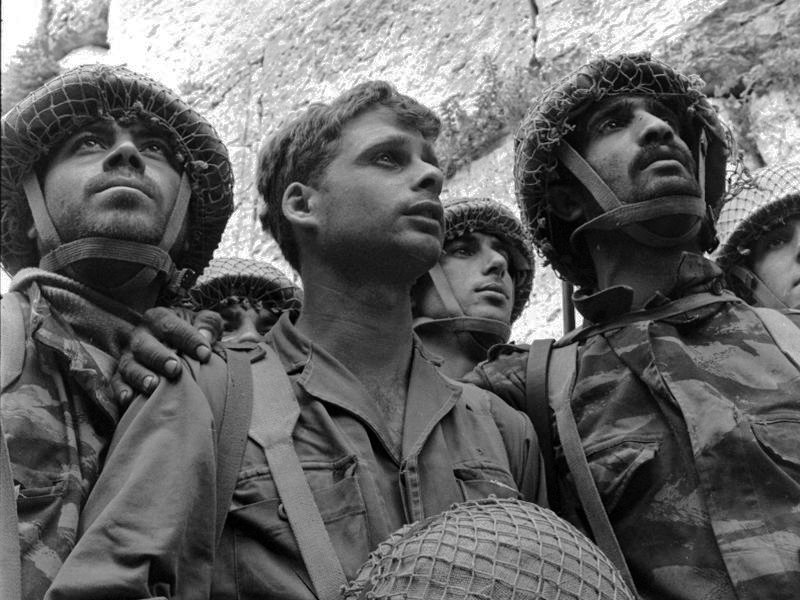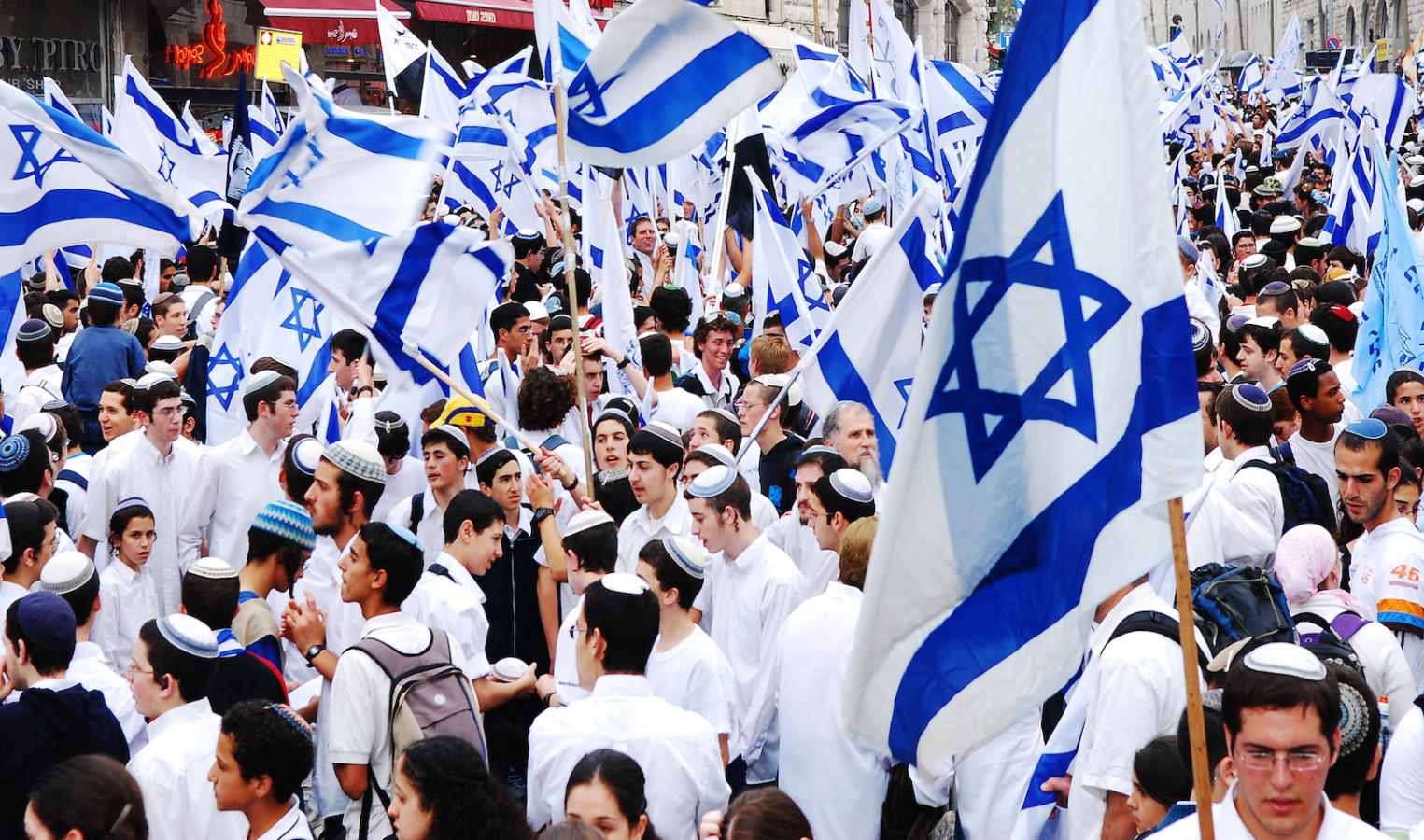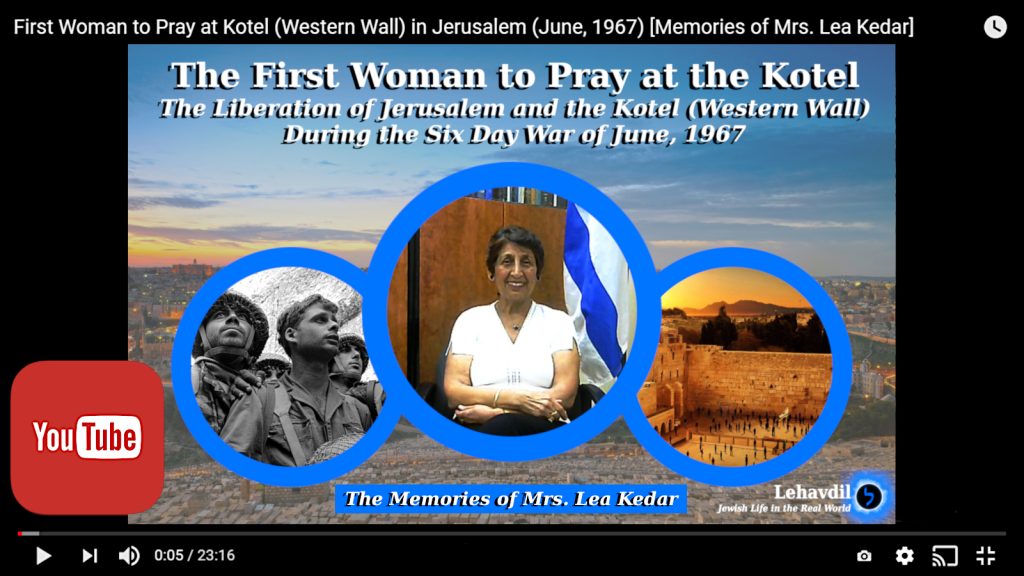
Watch or share the mini-documentary by clicking on the image above, or read the article below.
Inspired by Mrs. Lea Kedar, the first Jewish woman (as a non-military civilian) to pray at the Kotel (Western Wall) in June of 1967.
Published in honor of Yom Yerushalayim, or Jerusalem Day, commemorating the complete liberation of Jerusalem by the Israel Defense Force during the Six Day War of 1967.
(8-9 Minute Read)

It was the summer of 1967. The scent of pine trees mingled with the dampness emanating from cool, worn stones. The sticky Mediterranean heat matched the rising tensions of the Jewish people living in the State of Israel nearing the brink of war. In Jerusalem in particular the Jewish residents stockpiled food and other supplies while speculating about the massing of Egyptian, Syrian, and Jordanian tanks and other military forces on their respective borders.
Lea Kedar was a young Jewish mother living in Jerusalem and also an employee of the Municipality of Jerusalem. She worked for the Water Supply Department under the leadership of Mayor Teddy Kollek. Despite the growing uncertainty, Lea continued to go to work like any other time in her life. Her boss insisted that he expected a full-scale war to commence very shortly, while Lea Kedar predicted otherwise. They even made a bet on it with the stakes being a drink of cognac, which was somewhat ironic since Lea had no personal interest in drinking alcohol.
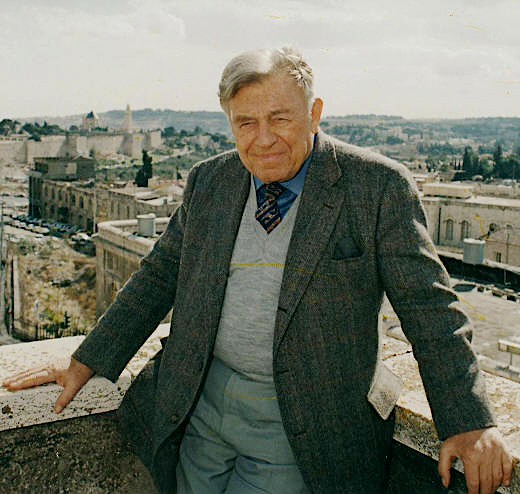
As the days passed, Lea soon began to notice that more and more Israel Defense Force reserve soldiers were being mobilized, and fewer and fewer young people, especially young men, were found in the streets. Lea had a young one year-old baby. She decided that the best course of action was to take her baby to her mother’s apartment in the Katamon neighborhood of Jerusalem for care while she worked, and they would all be together if and when the war started.
On her way to work on a local bus, Lea sat with a handful of other passengers as they passed by the outer walls of the Arab-held Old City. As they neared the ancient walls, they could hear shooting in the distance. Not long after, the morning Jerusalem air was further punctured by the mournful wail of air raid-style sirens. At the instruction of the bus driver, the passengers fled from their transport to find a place to hide from the incoming attack. Lea Kedar and some other passengers raced to a nearby apartment building and located a temporary “shelter” underneath the steps to the upper floors.
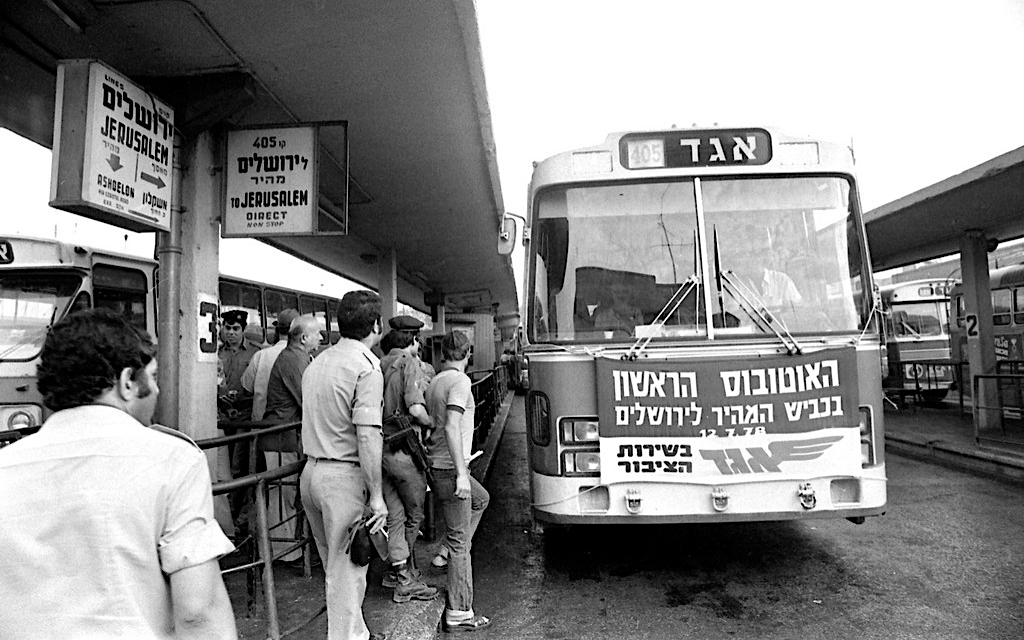
Eventually the warning siren fell silent, and Lea along with the other passengers returned to the bus. Somewhat shockingly, Lea was still determined to make it in to work.
“Sorry, everybody,” the bus driver announced as he resumed his place behind the wheel of the large vehicle. “The war has started. Goodbye.” The driver put the old bus into gear and drove off, leaving Lea and his other passengers behind. With no other mode of transportation, Lea and her fellow travelers had no choice but to walk the remaining distance to their destination, which for Lea Kedar was still the Water Supply office of Jerusalem.
Lea finally arrived at her office, and her boss (to whom she now owed a cognac drink due to her lost bet) demanded that she go home. Lea countered that she had no way of getting there, especially with the shooting and bombing overtaking Jerusalem. But her boss insisted that she find a way to get to safety.
At about one in the afternoon, a young man working for the Water Supply Department of Jerusalem had come by the office briefly with a car. Lea asked him if by chance he would be passing near the Katamon neighborhood of Jerusalem on his way home.
“Yes, actually,” he replied. “My wife is pregnant and due to give birth soon, so I am on my way to the hospital in the Katamon area. Of course I can take you as far as the Misgav Ladach hospital.”
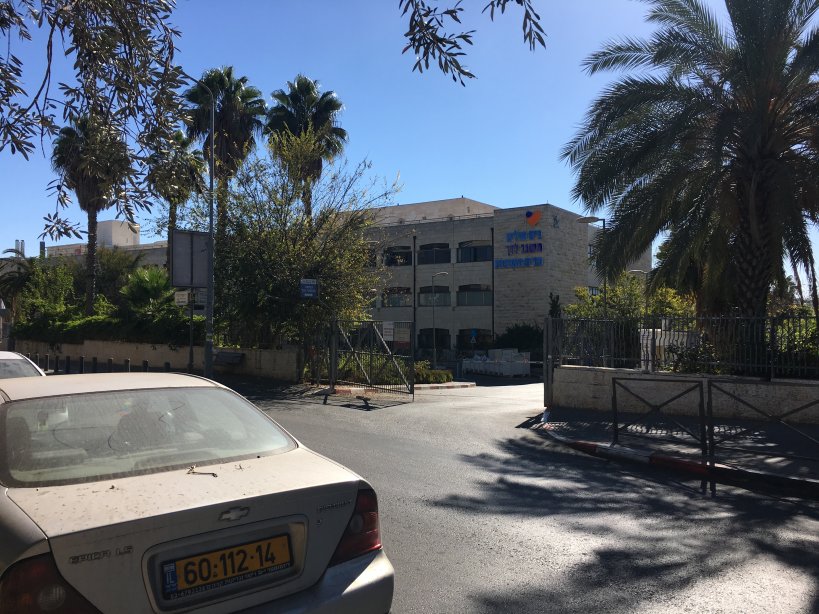
“Wow, Hashgacha Pratit, Divine Providence,” Lea answered, and thanked the young man in advance for taking her close to her parents’ home.
From the hospital, Lea Kedar began to walk through the neighborhood to the Kedar family residence. The Katamon streets were empty and abandoned with the exception of a man significantly older than the young Jewish mother and Water Supply worker.
Suddenly shooting began in the Katamon area in proximity to Lea and the older Jewish man.
“Hey, lady!” the older gentleman shouted at Lea as she froze in fear and shock. “What are you doing? Get on the ground! Do you want to get shot? Can’t you see all of the shooting?”
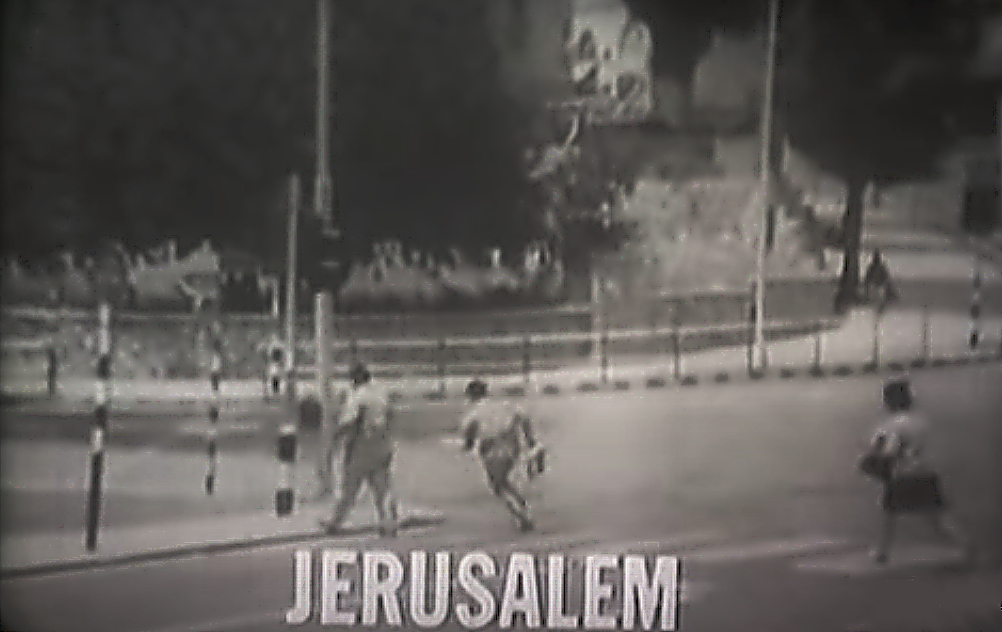
For several minutes both Lea and the older Jewish man lay flat on the pavement in their respective corners of the road. Eventually the shooting subsided.
“The shooting stopped,” the older man called back to Lea. “You go run home and I’ll run home. Now, hurry!”
Lea Kedar jumped up from the road and rushed home. She found her mother in the apartment calmly taking care of the baby.
“Ima! Mom! What are you doing?” Lea asked her mother in out-of-breath exasperation.
“Just feeding the baby,” her mother replied casually.
“We need to get to a shelter! The war has started!”
Numerous families from several nearby apartment buildings gathered together in a first-floor residence in the building of Lea’s parents, as it was deemed to be the safest location and the closest structure to a large shelter that they could reasonably find. Women and children were crammed together like sardines, huddled together and sleeping on the floor on thin blankets. One of these women was a neighbor who was eight-months pregnant while her husband, Avram, had been called to serve in the Israeli military as a reservist.
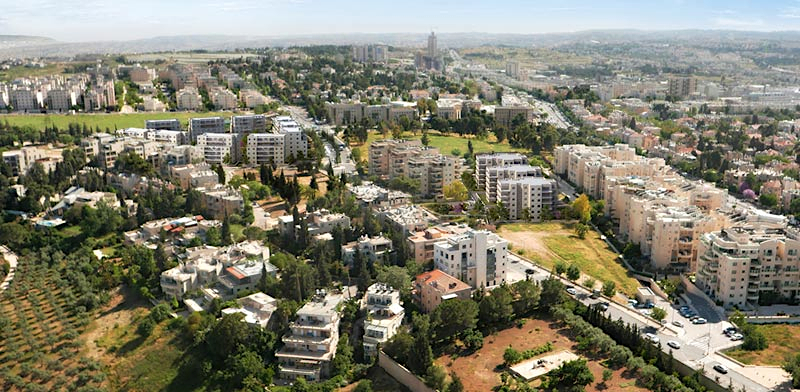
“Abba, Dad,” Lea called out to her father, who was a very religious man, as she made her way downstairs. “Aren’t you coming to the ‘shelter’ downstairs?”
“No,” he countered. “I trust in the Holy One, Blessed Be He. And I’m staying right here with your mother in our own home and we are sleeping in our own bed.”
Lea Kedar along with her two older sisters who had also come to their parents’ apartment building in Katamon went downstairs into the ‘shelter.’ They taped the windows to avoid shards of glass splintering into the room from falling bombs. They also worked together to fill sandbags and line them along the windows and other vulnerable areas for protection.
As night fell, the ominous sounds of flying bullets and falling bombs echoed throughout the cool, dark Jerusalem air. In and around the Katamon region the shooting and bombing was particularly fierce. In the middle of the night the frightened occupants of the makeshift ‘shelter’ turned on the radio. Military march music reverberated from the old-fashioned speakers. And a rumor was circulated that Jordanian tanks were approaching Kibbutz Ramat Rachel, a location not far from Katamon. Fear washed over Lea Kedar as she remembered walking with her friends from her family’s residence in Katamon to Kibbutz Ramat Rachel. It was a long walk, but still nonetheless relatively close to the Kedar family and the other ‘shelter’ occupants. Nobody could sleep, fearing what could happen if Jordanian forces pushed further into Jerusalem.
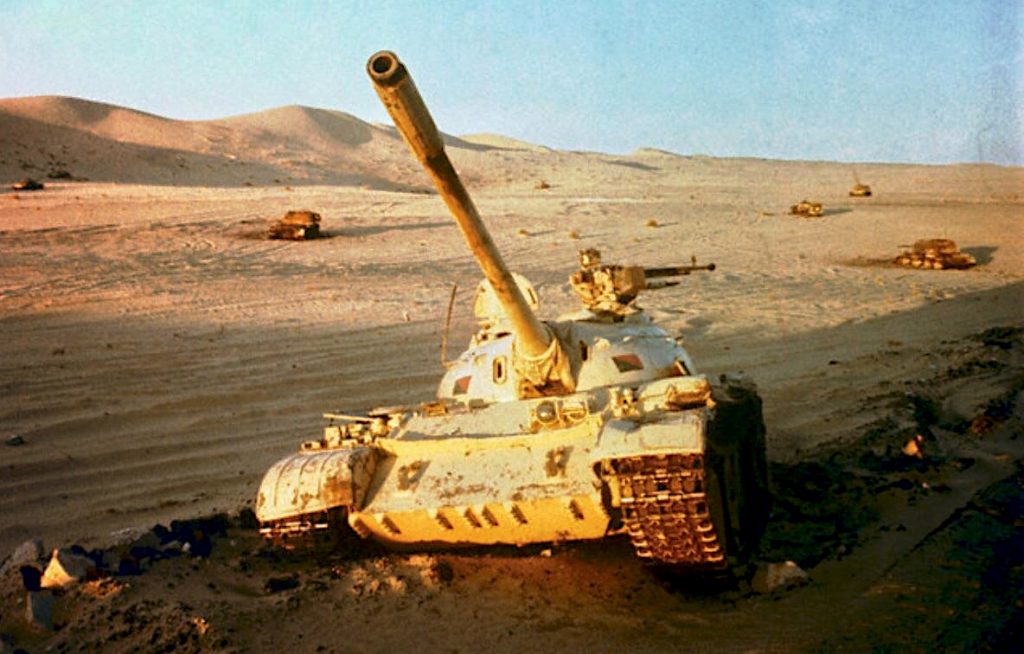
At about two in the morning, a heavy pounding echoed from the door of the bottom-level apartment ‘shelter.’ Someone was knocking on the door fervently, slamming their fist against the wood. Lea and the shelter occupants froze in silent fear. No one whispered a sound, let alone answered the door.
Again the heavy knocking reverberated from the wooden door. And yet again a third time and a fourth. Finally a voice called from the other side of the door.
“Don’t be afraid. It’s me, Avram!”
“Oh!” the pregnant neighbor exclaimed. “That’s my husband!”
Tangible relief flooded the room, and immediately the occupants opened the door. Framed in the darkness a tall figure stood in the doorway in an olive green Israeli uniform. His clothing and equipment was dusty and dirty, and he clutched an Israeli Uzi submachine gun.
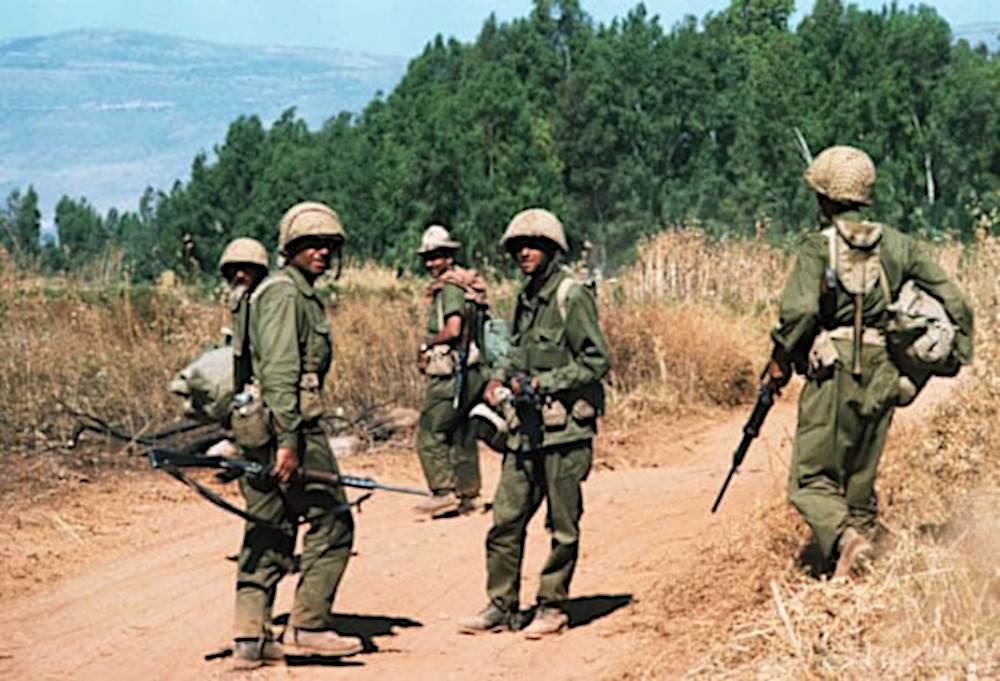
Avram greeted his wife and the other occupants happily but quickly.
“Most of that bombing that you hear,” the visiting Israeli reserve soldier explained, “is us bombing them. And we are taking control of the Kotel!”
The fear inside the ‘shelter’ melted into wondrous disbelief and then shifted into excitement. If the Israeli military was liberating the Kotel, or Western Wall, in the Old City, then this was both great news as well as a very positive sign for the pending outcome of the war.
“Okay, see you later!” Avram rushed out as quickly as he came, and rejoined his IDF military unit.
The excitement grew along with optimistic murmuring. Lea Kedar whispered a prayer, asking the Almighty to preserve as many of the lives of the young men and women serving in the IDF and fighting on the front lines as possible.
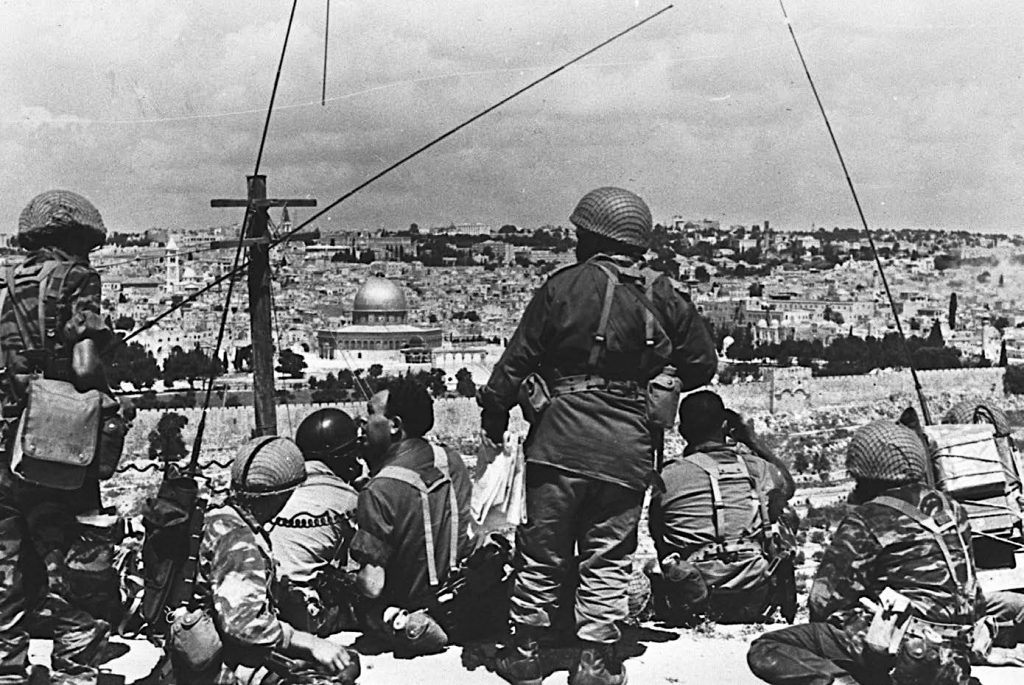
The following morning at about seven o’clock, Lea and her sisters went upstairs to her parents’ apartment. At some point in the night, a large bomb had fallen in the neighborhood near the apartment building. And the building adjacent to the corner where the Kedar family apartment sat had been completely destroyed. But both the ‘shelter’ occupants as well as Lea’s defiant father and mother were completely unharmed. Lea noted to herself that her father must have been right. The Eternal One did protect them all.
A radio had been turned on inside the Kedar family residence. The song, “Yerushalayim shel Zahav,” or “Jerusalem of Gold,” floated through the dewey morning air. Written by Naomi Shemer in May of 1967, the song described the attitude of longing by the Jewish people for Jerusalem, in particular the Kotel, or Western Wall, as well as the historical Old City. About a month later the song surged in popularity as it became the unofficial anthem of the liberation of Jerusalem, especially after the addition of the fourth verse and some other modifications.
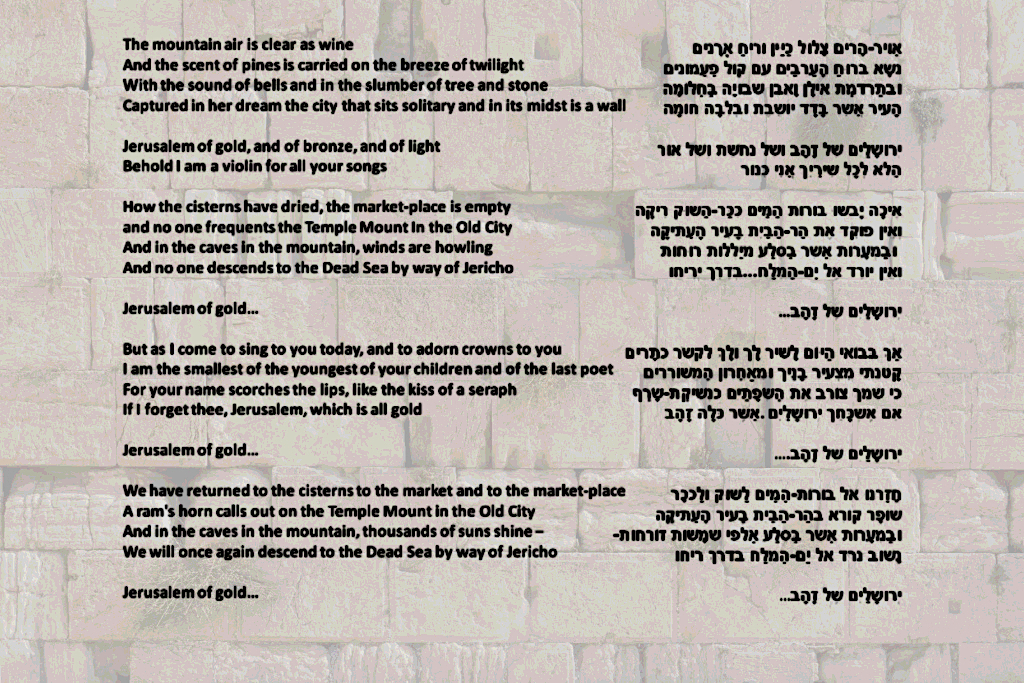
The entire Kedar family, and much of the entire Jewish population of Jerusalem and Israel, listened to the radio with intense emotion. Tears flowed from Lea’s eyes as she listened to the words of the song that would become one of the most classic songs in the entire Jewish world, noting how even the original lyrics and verses that had not been modified still encapsulated the moment and were almost prophetic in nature.
Filled with optimistic hope and excitement, Lea and her two sisters walked by foot towards downtown Jerusalem to see what was happening. Along King George Street countless Arab men were gathered together under Israeli supervision and being loaded onto buses. They were prisoners of war from the Jordanian and other Arab armies being prepared for their return to their nation of origin after the war.
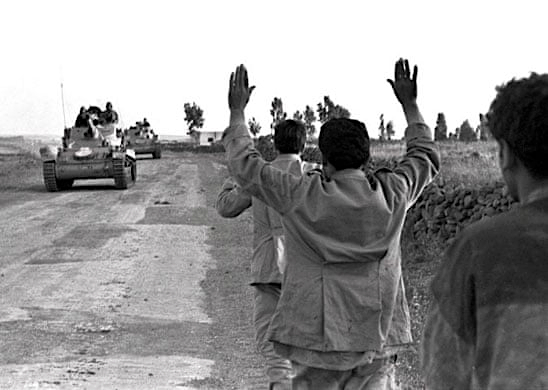
Two days later on a Friday morning, Lea Kedar had returned to her work at the Water Supply Department of Jerusalem. Her boss wasn’t present that day, but at about one in the afternoon several of her co-workers approached her.
“Lea,” four men asked her with a hint of mischief in their voices. “Do you want to go to the Kotel?”
“The Western Wall? What, are you kidding me?” Lea repeated incredulously. “How can we get to the Kotel? Our army just took control of it two days ago and they won’t let anyone besides authorized military personnel go anywhere near it.”
“Just leave that to us,” one of the four municipal workers replied. “Do you want to go to the Kotel or not?”
Lea eyed the two men suspiciously. “Is this some kind of joke?”
“Come on, Lea,” they prodded and begged. “It will be fun and exciting, and a great experience!”
“Alright, I guess,” Lea agreed, her voice being laced with skeptical confusion.
“Well,” one of the men added connivingly. “There is one small condition that you need to help us with first in order to go to the Kotel.”
“Okay,” Lea responded as she crossed her arms and raised her eyebrow. “Let’s hear it.”
“We need you to type out a fake letter from the Water Supply Department under the authority of Mayor Teddy Kollek on official letterhead that we have been ordered to provide water resources to key areas of the Old City, and then you need to forge an authoritative signature on it.”
“No, absolutely not,” Lea protested and shook her head. “There is no way that I am doing that. I am not going to do something like that and risk getting myself in trouble.”
The two men continued to beg and plead while Lea Kedar resisted. Finally she agreed on a “compromise” in which the two men would ultimately be responsible for the writing of the bogus letter and signing the fake signature.
The four men and Lea climbed into a car filled with a rush of excitement. One of them had been born and raised in the Old City of Jerusalem before the Arabs expelled all Jewish residents during the War for Independence in 1948. The carload of Water Supply workers pulled up to the first IDF checkpoint.

An Israeli soldier in full uniform with a rifle slung over his shoulder held up his hand, calling for the car to halt.
“Where do you think you are going?” the soldier demanded gruffly, preparing to turn the civilian vehicle away from the checkpoint.
“We are workers of the Water Supply Department of the Jerusalem Municipality. We have a signed letter here ordering us into the Old City to provide water,” one of the civilians fibbed as he handed the soldier the document that they themselves had crafted just a few minutes.
The Israeli soldier stared at the letter in surprise and a bit of confusion. He glanced at it up and down, forward and backward, noting the official letterhead of the municipal government of Jerusalem under Teddy Kollek as well as the authoritative signature.
“Alright,” the soldier shrugged and ordered the checkpoint to be opened by his fellow soldiers. “Go ahead and pull through.”
Lea and her co-workers continued this routine with similar results through several more IDF checkpoints as they drew nearer and nearer to the Old City and the Kotel.
Finally the Water Supply workers made their way into the Old City from Sha’ar HaAriyot, or the Lion’s Gate, facing the Mount of Olives. As they entered the liberated Jewish Quarter of the Old City previously controlled by the Arabs, the visitors embraced each other, dancing and rejoicing with tears of joy, completely oblivious to the very real and lethal danger of Arab snipers who had not yet been fully rooted out of the Old City by Israeli forces.
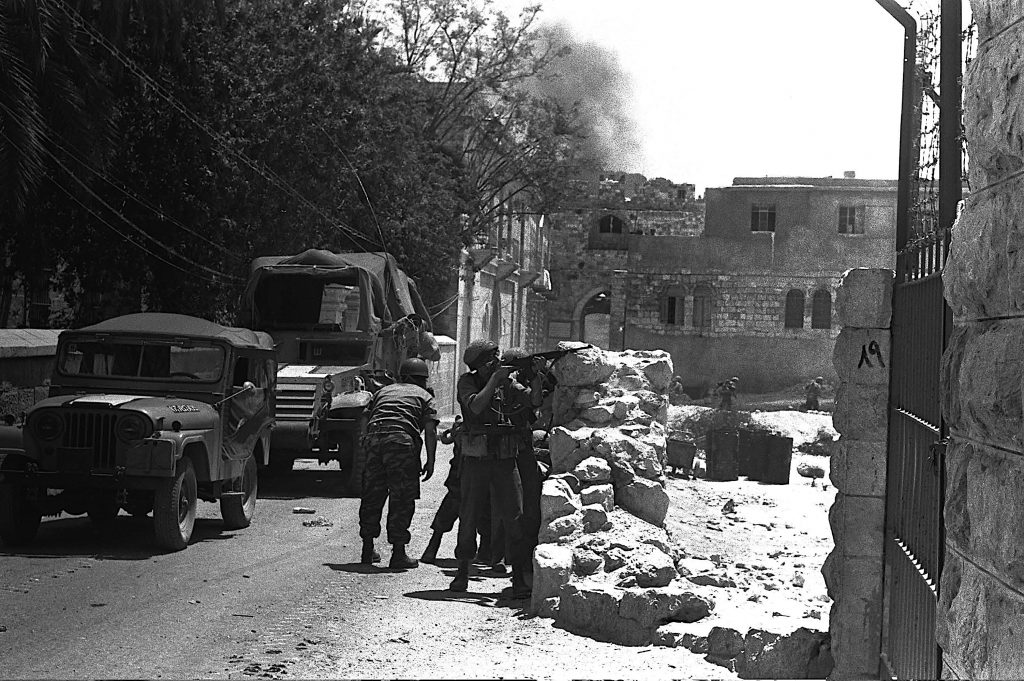
Following their guide who had been born and raised in the Old City, they soon found themselves in front of the Kotel, the remaining wall of the Beit HaMikdash, or Holy Temple, first constructed by King Solomon and later by Jews returning from the Babylonian exile. As such, the Kotel, or Western Wall, has maintained its status as the holiest site in all of Judaism for nearly two thousand years. The wall of faded ivory-colored stone rose before them in majestic silence emanating spiritual potency and holiness. The Water Supply crew approached the Kotel solemnly, kissing the stones and uttering softly-whispered prayers. The man who had been born in the Old City cried profusely, calling out “Abba! Abba!” in memory of his father with whom he had traversed the historical stone steps of the ancient Jewish city more than two decades before.
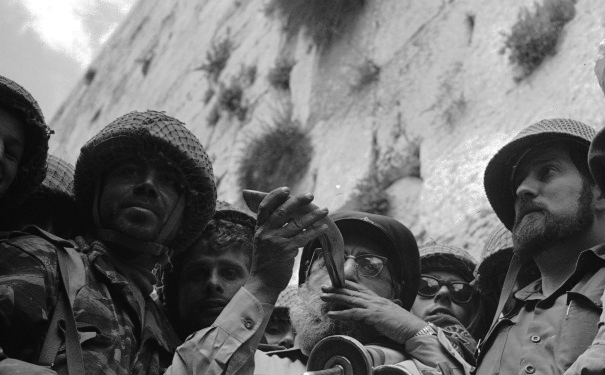
Eventually Lea and her co-workers left the small walkway facing the Western Wall (the plaza now found at the Kotel had not yet been constructed).
“Listen,” Lea addressed the other Water Supply workers. “If I go back and tell my family and friends that I was in the Old City of Jerusalem and at the Kotel, no one will believe me. Let’s go to a small grocery store in the Arab Quarter and buy a pack of cigarettes with Arabic packaging even though I don’t smoke, so I can prove to people that we were really here.”
As Lea and her friends bought the cigarettes, an older Arabic woman approached them.
“Tell me,” she asked with a tone of malicious optimism. “Do you Jews have as much damage on your side as we do here?”
“No,” Lea lied, perceiving that the old woman wished to solace herself in the face of their unexpected defeat with vindictive gloating. “We don’t have any damage whatsoever.”

Finally Lea and her friends departed from the Old City of Jerusalem. Of course, when Lea returned to her family’s residence in the Katamon neighborhood, none of her family or friends believed that she had, in fact, just visited the Kotel. Lea Kedar then triumphantly displayed the cigarettes with Arabic packaging instead of Hebrew that had been bought in the Arab marketplace near the Western Wall. Her family and friends were speechless with awe that Lea Kedar had presumably become the first Jewish woman (especially as a civilian rather than a member of the Israeli military) to pray at the liberated Kotel immediately after the Six Day War of June, 1967.
Over fifty years later, Mrs. Lea Kedar still recounts her story, especially in the emotional interview filmed exclusively that inspired this article. She concluded her interview by emphasizing that she firmly believes that Jerusalem is the eternal capital of Israel, and that all Jewish people all over the world (including the United States) should always support Israel as the one Jewish nation as well as the Jewish control of Jerusalem.

Watch or share the exclusive video interview.
Click on the image above!

